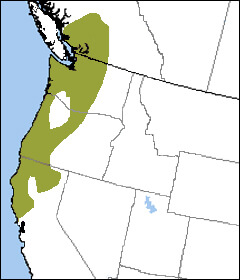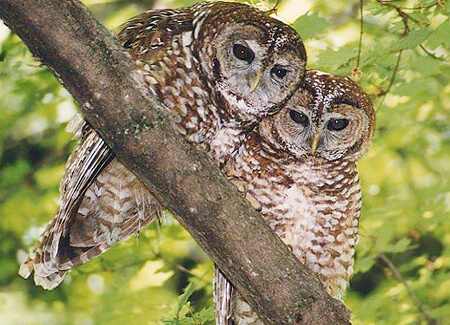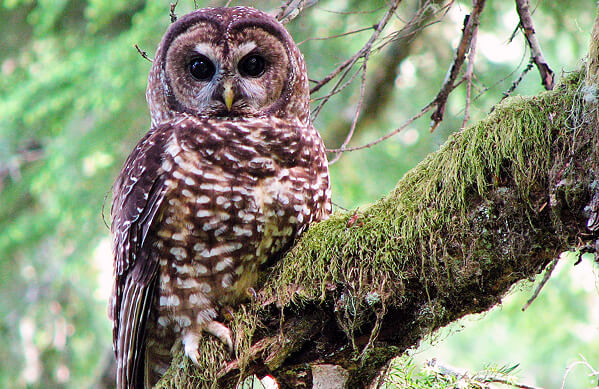 The dark-eyed Northern Spotted Owl is an "indicator species" for old-growth forests, meaning scientists study the bird to get a larger picture of the health of the ecosystem it shares with species such as Marbled Murrelet, Swainson's Thrush, Western Tanager, and Evening Grosbeak.
The dark-eyed Northern Spotted Owl is an "indicator species" for old-growth forests, meaning scientists study the bird to get a larger picture of the health of the ecosystem it shares with species such as Marbled Murrelet, Swainson's Thrush, Western Tanager, and Evening Grosbeak.
This owl is one of three spotted owl subspecies (along with California and Mexican) and is listed as Threatened under the Endangered Species Act. Threats include loss and degradation of habitat and competition with the Barred Owl.
Spotted Owl's Ongoing Decline
Reserve areas and critical habitat have been designated to help recover owl populations, and monitoring reports indicate that habitat restoration efforts on public lands are working. Unfortunately, Northern Spotted Owl numbers continue to decline at a rate of 2.9 percent per year due to logging on private lands and reduced breeding success due to competition with Barred Owls, a more aggressive species that has spread west and now inhabits most of the Northern Spotted Owl's range.
Because of these declines, the Northern Spotted Owl may be uplisted to Endangered, a change supported by ABC.
Sign up for ABC's eNews to learn how you can help protect birds

Northern Spotted Owls by U.S. Fish and Wildlife Service
Northern Spotted Owls are very territorial and intolerant of habitat disturbance. Although they do not migrate, they may shift their ranges in response to seasonal changes, such as heavy snows that make hunting difficult, and forest fires. Research suggests that the owls are well-adapted to fires, using recently burned areas to forage for rodents and remaining in their territories if enough tree canopy cover remains.
Taking Action to Save Owl Habitat
This species has received much media attention because of the ongoing, controversial logging of its forest habitat. ABC is advocating for protection of old-growth habitat on federal lands in the updated Northwest Forest Plan, which was put in place in 1994 to restore habitat to benefit the threatened Northern Spotted Owl, Marbled Murrelet, and salmon stocks. Twenty years after its implementation, this 100-year restoration plan is working and needs more time to recover the old-growth ecosystem and the species, including this owl, that depend on it.
Donate to support ABC's conservation mission!



















































